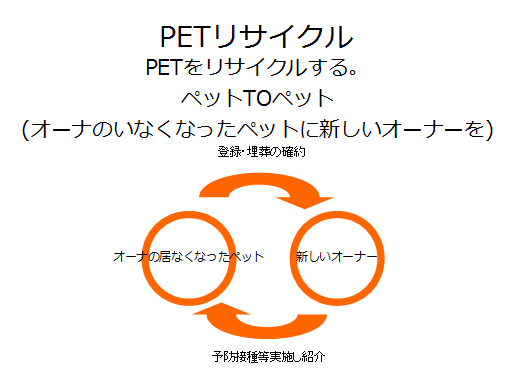 | Inside Out Movie Storybook【電子書籍】[ Disney Books ] 価格:1067円 |
映画が全世界でリリースされる際、特に英語圏からの作品は、タイトルの翻訳や適応が文化的な適切さやマーケティング戦略において興味深い問題を提起します。ピクサーの愛されるアニメーション映画「Inside Out」が日本で「Inside Head」として公開されたことは、その一例です。最近発表されたその続編が「Inside Head 2」として続くことが決定され、二言語を使う視聴者や国際的な視聴者の間で議論や混乱を引き起こしています。
ローカライズの理解
ローカライズとは、特定の市場に合わせて製品やコンテンツを適応させるプロセスを指します。映画のコンテキストでは、これは言語だけでなく、タイトルなどの文化的な参照も変更することを意味することがあります。この目的は、タイトルが文化的ニュアンスや期待を反映することで、映画が現地の視聴者により深く響くようにすることです。
「Inside Out」は、若い女の子の心の中で人格化された感情を描いているため、「Inside Head」というタイトルは日本の視聴者にとって直接的に中心的なテーマを伝え、映画をよりアクセスしやすく、関連性のあるものにするために適切と判断されました。
続編タイトルの課題
しかし、「Inside Head 2」という名称の継続は、一様に好意的に受け入れられたわけではありません。一部の視聴者は、元の英語のタイトルからの変更は不要で混乱を招くものと感じており、特に日本語と英語の両方でメディアを消費する人々にとっては、文化間での議論やコンテンツの接続を難しくしています。
視聴者の反応とメディア消費
続編のタイトリングにおける一貫性のなさは、連続性を期待するファンにとってはフラストレーションの原因となります。また、グローバルまたはバイリンガルの設定で映画について話す人々にとっても、情報を追跡し、意見を共有し、関連する商品を見つけることが困難になることがあります。
配給戦略への提案
ローカライズチームや映画配給者は、特に続編においてタイトル戦略の一貫性を考慮することで、異なる市場間での連続性を保つことが有益かもしれません。文化的適応は重要ですが、元のブランディングとそのグローバルなファンベースの結束を尊重することも必要です。
結論
映画のローカライズにおけるタイトル変更は一長一短です。それは新しい市場内での関連性を高めることができますが、元のコンテンツからの混乱や遠ざけることもあります。グローバルなメディア消費が続く中、ローカライズのニーズとグローバルなアイデンティティの維持の間でバランスを取る必要があるかもしれません。
最後に、ブログやソーシャルメディアで表明された視聴者のフィードバックは重要です。それは将来のローカライズの実践を形成し、配給者が異なる地域の多様なニーズを最もよく満たす方法を評価するのに役立つかもしれません。
Title: "Inside Out" vs. "Inside Head": Navigating Title Changes in Film Localization
When it comes to the global release of films, particularly those that originate from the U.S. or other English-speaking countries, the matter of localization−including the translation or adaptation of titles−often raises intriguing questions about cultural relevance and marketing strategies. A prime example of this is Pixar's beloved animated feature "Inside Out," which was titled "Inside Head" in Japan. The recent announcement of its sequel, continuing under the modified title "Inside Head 2," has sparked discussions and some confusion among bilingual and international audiences.
Understanding Localization
Localization is the process of adapting a product or content to suit a particular market. In the context of film, this can mean altering not just the language but also cultural references, including titles. The goal is to make the film resonate more deeply with the local audience by ensuring the title reflects cultural nuances and expectations.
For "Inside Out," a film that delves into the emotions personified within a young girl's mind, the title "Inside Head" was deemed more straightforward for Japanese audiences. It directly communicates the central theme of emotions and mental processes, which could potentially make the film more accessible and relatable.
The Challenge of Sequel Titles
However, the continuation of this naming trend with "Inside Head 2" has not been met with universal approval. Some viewers find this change from the original English title unnecessary and confusing, particularly those who consume media in both Japanese and English. This confusion is compounded when trying to connect discussions or content across cultural lines, as the changed title might obscure the fact that it’s the same film series being discussed.
Viewer Reactions and Media Consumption
The inconsistency in sequel titling can be frustrating for fans who expect continuity. It also poses challenges for those who discuss the films in global or bilingual settings. Fans and critics alike might struggle with tracking information, sharing opinions, and even finding merchandise related to the film.
Suggestion for Distribution Strategies
Localization teams and film distributors might benefit from considering more consistent titling strategies, especially for sequels, to maintain continuity across different markets. While cultural adaptation is vital, so is the need to respect the film's original branding and the cohesion of its global fanbase.
Conclusion
Title changes in film localization are a double-edged sword. They can enhance the relatability of a film within a new market but can also lead to confusion and detachment from the original content. As global media consumption continues to grow, perhaps a balance must be struck between localization needs and maintaining a consistent global identity for media products.
In the end, feedback from viewers like those expressed on blogs and social media plays a crucial role. It can inform future localization practices and help distributors gauge how to best meet the diverse needs of a global audience while respecting the integrity of the original film.
【このカテゴリーの最新記事】
-
no image
-
no image
-
no image
-
no image
-
no image
-
no image
-
no image
-
no image
-
no image
-
no image
-
no image
-
no image
-
no image
-
no image
-
no image
-
no image
-
no image
-
no image
-
no image
-
no image

